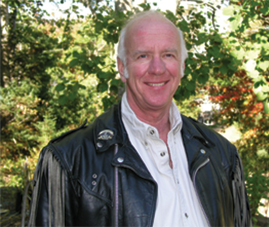The Lens That Grows – Henry Ford was so right
20/07
What I focus on expands. When I look for red and white trucks on my drive to work, I see way more than if I don’t look for them. So too if I look for ability and good in people, I see more than if I don’t look for those. Way more than if I am prone to look for incompetence and bad traits in people. This simply makes sense, yet we are not usually deliberate in how we ‘look’ at people. Judging others as not up to the mark can too easily become a habit, subconscious. When I look at you with judgment, constantly seeking incompetence, you know, even if I do not speak. You know. And that is a deposit into our relationship account (more like a withdrawal).
Henry Ford tells us that ‘if you say you can or if you say you can’t, you are right’. My expectation of myself massively colours what is possible for me. This idea applied to others sets me up to find evidence to support a low, or high, opinion of them. I think you are incompetent so I will find all kinds of ‘proof’ that I will embellish through many observations to convince myself that I am right about you. To rephrase then, ‘if I say you are competent or if I say you are not, I find evidence to make myself right’.
A seemingly more innocuous situation would be that I see you as inexperienced. Might even be true. But how might I likely treat you? Might not ask you to take on more challenging tasks. Might say out loud that ‘you are inexperienced, what could we have expected?’ Might rescue you, maybe even publicly, when inexperienced behaviour could have instead been the doorway to teaching, mentoring or Coaching. Rescue is my ego option. My ego figures I get to, once more, demonstrate how much I know and how inexperienced you are and that you ought to be grateful that I saved you.
From the point of view of growing new employees or team members, in what I have said so far, what is working well for you?
A dear colleague and co-facilitator of workshops on many topics, Adonica Sweet, CEC PCC, and I, co-designed ‘the lens that grows’ as a way to see and interact with teammates. We have published articles, developed handouts and conducted workshops on this very topic. One of the greatest parts of the ‘aha’ the participants experience is that we are not selling anything, rather, just opening their awareness to an option about what they and their teammates, inherently crave, but may not know how to get or to even have yet named.
Imagine that you are a new supervisor/manager/team leader and you meet your direct reports for the very first time. There they are in front of you, waiting, wondering, some will be cringing. There they are. I have introduced this idea, that I am about to introduce to you, to landscaping companies with field crews, to multi-million dollar company Executives and to the range of folks in between.
There you are. There they are. Now what? How I see my new team, what does that have to do with anything?
We humans are amazingly well tuned to rejection and judgment. We feel it before it is said. We know. So let us be clear, it is not the lovely scripted words that carry the day. It is the sense/feeling the people hold about you as they interact with you in that first meeting. If you figure some of them are losers, they sense they are seen as if they are. And they know you think that! What a great start, huh.
Consider…
Imagine a line in your mind with an X near the left end and a Y near the right end
X=the lens through which you initially see each person as “first impression”, could be first judgment, could be neutral
Y=is the way you want to be able to see them, could be completely fulfilling the job you hired them to do, or even more
Method: each day mark on the line to point at how close your lens is (how you see them), right now, to the X or the Y. On the first day this point is the original X. Now, look at them. In your mind move the pointer a little ways closer to the Y, then challenge yourself to interact with them with the expectation that they are at that new level, closer to Y than the last time you interacted with them. Act with your new lens (and expect them to completely impress you) and notice what happens. Do more of what works. Making the increment toward Y too big can sabotage the whole thing, though your ego will feel wonderful because it gets to be the life saver once again. Smaller increments usually work best.
Make a notebook page for each person on your team. Establish and describe, the initial X and desired Y for every person. From there, interact day to day with each person where you perceive them to be in a manner that clearly communicates the Y you believe they can attain. Write down the expectation towards Y that you have. Notice the changes in them over time, and in you too. Many people soon outrun the Y you initially assigned to them. What a great opportunity to take that person aside and to tell them how you have been watching their progress and how far they have come. You will even have documented examples with dates in your notebook. Celebrate with them.
Imagine the group getting together to co-design a Group X and a Group Y and a way to track the movement from X toward Y. A great way to track things is to have a public place, like a bulletin board, where anyone can name a ‘hit’ where they experienced a shift toward Y. Call that the celebration chart or hit board or whatever suits the group best. You might need to help them get started because there is a tendency to expect over the top, six o’clock news, levels of shift. No. Increments please. Let this be natural and easy and expect it to make a positive difference. A strong Y can be invigorating, enticing and motivating, yet, keep it real so they don’t soon give up. Celebrate the increments attained. Small is good.
Want to get really crazy? Invite them to set an X and a Y for you. Yeah, I am serious. Not the first day maybe, but yes, when the whole group is choosing ‘higher’ lenses to interact with each other, magic, good, good magic starts to happen. How much of all of this is public and how much people just do in their own notebook will depend on the state of trust in the group. Doing this kind of thing well will certainly build trust. Participating with them makes you hugely more credible and your chances of success go way up. Be a model. I dare yah.
And about your own X and your Y, be kind to yourself about the Y and generous about your X. Set yourself up for success but with a bit of stretch. Celebrate your increments engaged/absorbed and laugh at the ones you struggle with. Some say that this part of the whole ‘lens that grows’ idea holds the most potent rocket fuel of all. You are hereby invited to take it for a spin, and don’t forget to celebrate tiny increments.
This is the first of four articles related to ‘the lens that grows’.
Joseph Seiler MCC
The other four articles are, will be…
- Calling forth
- Performance reviews
- Arrogant empowerment


